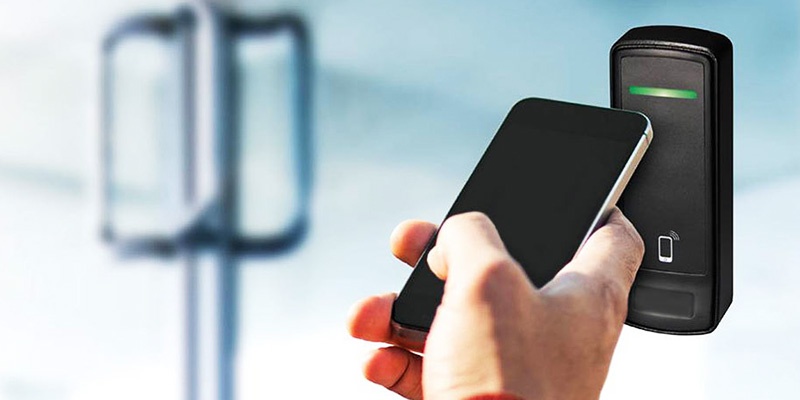
Enterprise organizations have found yet another use for smartphones – hands-free access control. Smart devices, including phones, tablets and watches, are replacing plastic access cards and personal identification numbers (PINs) as a more convenient and secure way to control physical access.
Imagine this office building scenario:Prior to a visitor’s arrival, corporate staff assigns a badge number that’s sent to a cloud-based server and the access controller. The visitor receives an email with a link to a mobile app that activates a credential. The doors she will access are already programmed into the system. At the building her phone and the access readers communicate via Bluetooth technology to open doors as she approaches. There’s no need for her to take her phone from her purse. That’s convenience.
Security is also baked into the system. The visitor must have possession of the phone, a biometric or PIN to unlock the screen and the mobile app. Built-in GPS technology allows security to quickly locate a phone and its owner. And since most of us are highly protective of our smartphones, they are less likely than an access card to be lost, stolen or loaned to another person.
There are two more big advantages offered by mobile credentialing. Unlike a printed plastic ID badge, mobile credentials can be remotely deactivated, reused and transferred. Secondly, costs related to printed badges are eliminated. That can be a major savings for larger organizations annually printing thousands of badges.
Realistically, plastic access cards won’t be completely eliminated in the immediate future. It will take years for large legacy systems to be replaced. However, there’s no reason an organization can’t begin taking advantage of mobile access control today. Hybrid readers supporting both proximity cards and smartphone credentials enable an orderly migration to the new technology. Also, add-on Bluetooth readers can be hidden in walls or ceilings to control door locks using a mobile device.
Mobile credentialing marks another big step in the evolution of access control. And as good as it is now, expect to see new capabilities as manufacturers continue to hone their mobile technologies.
